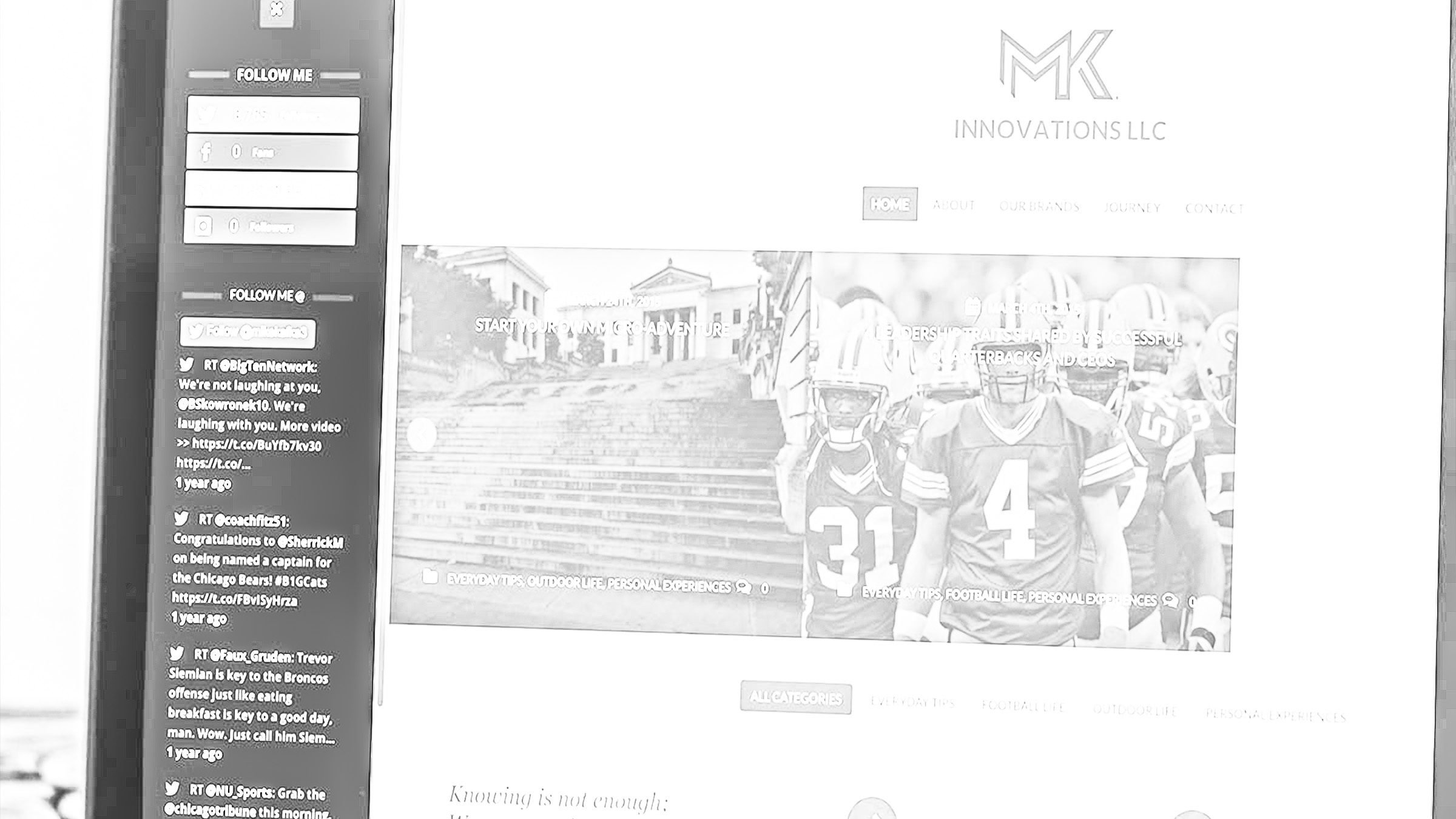A brand positioning statement is a crucial element of any successful brand strategy. It defines your brand’s unique value proposition and communicates what sets it apart from competitors in the market. This article will provide a step-by-step guide to creating a brand positioning statement that will help your brand stand out and resonate with your target customers.
First, we will discuss the importance of conducting a thorough brand audit and market research to understand your brand’s strengths and weaknesses, as well as the needs and preferences of your target market. This will provide valuable insights that you can use to craft a compelling brand positioning statement.
An accurate brand positioning statement explains and gives your business clarity about your services, develops an even better marketing campaign and strategy, among others.
Conduct a Brand Audit and Market Research
Before you begin creating an effective positioning statement, it is crucial to have a thorough understanding of your brand and the market you operate in. This will help you identify opportunities for improvement and areas where your brand can differentiate itself from competitors.
Conducting a brand audit is an essential first step in creating a brand positioning statement. This involves analyzing your brand’s current positioning, messaging, and visual identity and assessing its performance in the market. This can help you identify any inconsistencies or gaps in your branding efforts and provide valuable insights for crafting a more effective brand positioning statement.
Analyze current branding elements (positioning, messaging, visual identity)
To conduct a brand audit, start by reviewing your brand’s positioning and messaging. Consider whether your brand’s positioning is clearly defined and whether it differentiates you from competitors. Next, check your brand’s visual identity, including its logo, color palette, core elements, and overall design aesthetic. Make sure that these elements are cohesive and consistent across your branding materials.
Assess brand performance in the market
Assess your brand’s performance in the market. This can include analyzing metrics such as brand awareness, customer satisfaction, and sales data. This will help you identify areas where your brand is performing well and areas where it may need improvement in your marketing efforts.
Identify inconsistencies and gaps in branding efforts
Examining your brand’s positioning, messaging, and visual identity to see if they are clear and consistent, and assessing your brand’s performance in the market to see if there are any areas where it is underperforming. You can improve your branding efforts by identifying these inconsistencies and gaps and creating a more compelling brand positioning statement.
Conduct Market Research
In addition to conducting a brand audit, it is also vital to gather market research to understand the needs and preferences of your target markets. This can include conducting surveys, focus groups, and interviews, as well as analyzing data on market trends and customer behavior. This information will be invaluable in helping you create a brand positioning statement that resonates with your audience.
Gather data on target audience needs and preferences
Gather market research to understand the needs and preferences of your target audience. This can include conducting surveys, focus groups, and interviews, as well as analyzing data on market trends and customer behavior. This information will be invaluable in helping you create a brand positioning statement that resonates with your audience.
Conduct surveys, focus groups, and interviews
To conduct market research, start by defining your target audience and determining their needs and preferences. This can involve conducting surveys, focus groups, and interviews to gather feedback from potential customers. In addition, you can analyze data on market trends and customer behavior to gain insights into broader market trends and how your brand fits into the market.
Analyze market trends and customer behavior data
conducting a brand audit and market research will provide valuable information to help you create a more effective brand positioning statement. By understanding your brand and the market you operate in, you can craft a statement that resonates with your audience and differentiates you from competitors.
Define Your Target Audience and Identify Differentiators
Once you clearly understand your brand and the market, the next step is to define your target audience and identify the key benefits and differentiators that make your brand unique. This will be the foundation of your brand positioning statement and help you create messaging that resonates with your audience.
To define your target audience, consider demographics, interests, and behaviors. This will help you create a detailed profile of the people most likely to be interested in your brand and its products or services.
Once you clearly understand your target audience, you can begin to identify the key benefits and differentiators that make your brand unique. These should be specific, tangible, and relevant to your target audience. For example, if your brand offers organic, locally-sourced products, this could be a critical differentiator that resonates with consumers interested in healthy, sustainable options.
Craft Your Brand Positioning Statement
A brand positioning statement is a statement that clearly and concisely describes the unique value that your brand offers to its customers. This statement should be used consistently across all your marketing and branding efforts to help ensure that your brand stands out from competitors and is easily recognizable to your target audience.
To create a clear and concise brand positioning statement, follow these steps:
- Define your target audience: Who are the customers you are trying to reach with your brand?
- Identify your unique selling proposition (USP): What differentiates your brand from competitors? Why should customers choose your brand over others?
- Determine your brand’s core values: What principles and beliefs guide your brand?
- Use all of this information to craft a concise and compelling brand positioning statement that communicates the unique value that your brand offers to your target audience.
The importance of using your brand positioning statement consistently cannot be overstated. Consistency is key to building a strong and recognizable brand. Using your brand positioning statement consistently will help ensure that your brand stays top-of-mind for your customers and that your messaging is clear and consistent across all of your marketing and branding efforts. This will help you build trust and credibility with your audience, ultimately driving more business and sales for your brand.
Review and Refine Your Brand Positioning Statement
To review and refine your brand positioning statement, follow these steps:
- Start by re-evaluating your target audience. Have their needs or preferences changed? Are there new customer segments that you should target with your brand?
- Next, assess your unique selling proposition (USP). Is your USP still relevant and compelling? Have competitors introduced similar products or services that diminish the value of your USP?
- Consider the core values of your brand. Are these values still representative of your brand? Do they align with your target audience and your overall brand strategy?
- Use this information to update and refine your brand positioning statement. Make sure that it accurately reflects the unique value that your brand offers to your target audience and that it is aligned with your overall brand strategy.
Here are some tips for ensuring that your brand positioning statement remains relevant and practical:
- Keep it concise: Your brand positioning statement should be brief and to the point so that it is easily understood by your target audience.
- Be specific: Avoid vague or general statements. Instead, focus on specific benefits and features that make your brand unique and valuable to customers.
- Be consistent: Use your brand positioning statement consistently across all of your marketing and branding efforts. This will help to reinforce your brand message and build recognition among your target audience.
- Be flexible: Be willing to update and refine your brand positioning statement. The needs and preferences of your target audience and the competitive landscape can change over time, so it’s essential to regularly review and adjust your brand positioning statement to ensure that it remains relevant and practical.
3 Brand Positioning Statement Examples to Inspire Your Own Brand Positioning Statement
To add attributes and value terms to a positioning statement, first identify the unique qualities or features of your product or service. These are the attributes that set your offering apart from competitors. Next, determine the benefits or value that these attributes provide to customers. These value terms will make your positioning statement compelling and persuasive. For example, suppose your product is a running shoe with extra cushioning and support. In that case, the attribute is the added cushioning and support, and the value term is the improved comfort and performance for runners. You can then incorporate these attributes and value terms into your positioning statement by highlighting how your product or service provides specific benefits to customers.
For example, “Our running shoes are designed with extra cushioning and support for improved comfort and performance.”
- “Our sports equipment is designed to help athletes perform at their [best] and achieve their [goals].”
- “Our athletic apparel is made with the [latest technology] to keep athletes [comfortable] and [supported] during their toughest workouts.”
- “Our training programs are [tailored] to each athlete’s individual needs and designed to help them reach their [full potential].”
A brand positioning statement should include the following four elements:
- The target customer is the specific group of consumers the brand is trying to reach and appeal to. Identifying the target customer helps to focus on the positioning statement and make it more relevant and effective.
- The unique selling proposition (USP): This is a particular benefit or advantages the brand offers its target audience. The USP differentiates the brand from competitors and highlights why consumers should choose it over other options.
- The values and personality of the brand: This is the emotional connection that the brand creates with its target market. The importance and personality of the brand should align with the needs, desires, and preferences of the target audience to create a strong emotional bond.
- The competitive landscape: This is the context in which the brand operates, including the other products and services available in the market. Understanding the competitive landscape helps to position the brand in a way that sets it apart from competitors and positions it as the best option for the target audience.
Here is a brand positioning statement template that you can use to create your brand positioning statements:
- Our brand is [name of brand], and our target market is [description of target audience].
- Our unique selling proposition is [description of unique benefit or advantage].
- Our brand stands for [description of values and personality].
- In the competitive landscape of [description of market or industry], our brand stands out because [explanation of how brand differentiates from competitors].
For a successful Brand Positioning Statement you need…
Besides all the information we have provided you with, we would like to give you some other tips for you to implement while doing your Brand Positioning Statement:
Clarity
When you are about to deliver a message or would like to speak to your audience, it is important for you to be clear about what is your brand purpose, goals, and to have a clear voice about what you want to say.
Authenticity
Being authentic with your brand is one of the main key objectives to be successful in your brand’s positioning statement needs to be and feel authentic to your audience, that way, they will create an emotional bond with your brand that will help you connect with your clients, gaining functional and emotional benefits for your brand.
Memorability
Most of the beloved brands we know nowadays all have created a brand positioning statement that answers to the audience needs and expectations from the products and services. Positioning statement answers to all the elements your brand´s clients are looking for.
The benefits of creating a solid brand position statement for your brand identity.
In conclusion, creating a brand positioning statement is essential in developing a successful brand strategy. A clear and concise brand positioning statement helps to differentiate your brand from competitors and ensures that your brand message is consistent and easily recognizable to your target audience.
By conducting a brand audit and market research, defining your target audience, and crafting a compelling brand positioning statement, you can build a strong and distinctive brand that resonates with your customers and drives business growth.
- It helps to communicate the unique value that your brand offers to customers, which can differentiate your brand from competitors and make it more memorable to potential customers.
- A well-crafted brand positioning statement can serve as a guiding principle for all your branding efforts, helping to ensure that your messaging, marketing, and product development efforts are aligned and focused on delivering on your brand’s promise.
- A strong brand positioning statement can also help to focus your team’s efforts and provide direction for decision-making, helping to ensure that everyone is working towards a common goal.
- It can also help to establish trust and credibility with your target market by clearly stating what your brand stands for and what it offers.
- By defining your brand’s positioning upfront, you can also avoid potential misunderstandings or misperceptions about what your brand represents, which can be especially important in a crowded and competitive market.
- In the long run, a well-defined brand positioning can also help to drive business growth and success by attracting the right customers and building loyalty among your existing customer base.
Regularly reviewing and refining your brand positioning statement will help to ensure that it remains relevant and effective. By following these steps, you can create a brand positioning statement that will help to build trust and credibility with your customers and drive long-term success for your brand.
Work with us!
At Creatitive, we understand how important it is to create a gym business plan that will properly fit your needs and goals for you to succeed in your fitness center. That is why if you would like an experienced team to help you create the perfect business plan, we encourage you to contact us and we will happily provide you with all the information and answer any questions you might need.
FAQ
What other elements should I take into consideration to successfully implement my brand positioning statements?
Mainly, you need to be sure that your mission statement answers all the topics we have shared before. That way, your brand positioning statement will help you not only to generate brand presence, but also to make it easy for you to have an idea of what you want to accomplish with your current or future brand.
Are there other types of research I need to consider?
If your goal is to implement a specialized fitness center, for example, you need to be sure you understand your approaches and the environment you are going to be involved with in order to generate something new or make an improvement. An example is the apple company, apple emphasizes technological research because that is the market where they need to generate positioning statements.
Are there other ways to globalize my brand positioning statement?
Other ways to help you with your brand statement and value proposition are by creating compelling marketing campaigns, know your consumer insights, be sure about what your brand serves and what your brand delivers to your customers, and show up your business best practices.







